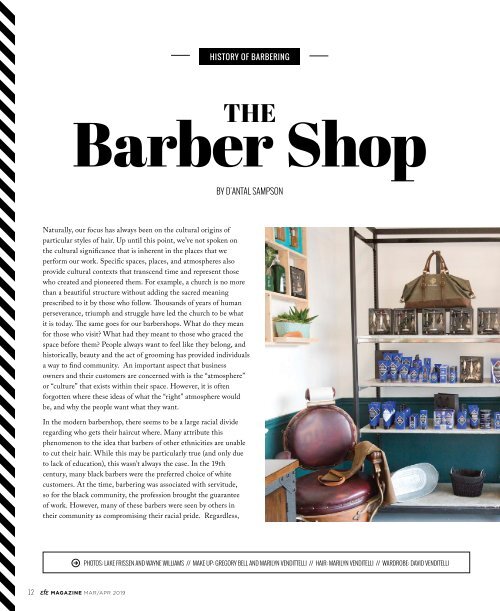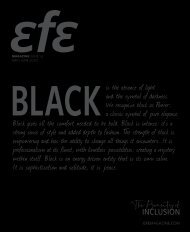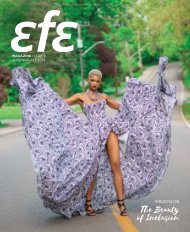You also want an ePaper? Increase the reach of your titles
YUMPU automatically turns print PDFs into web optimized ePapers that Google loves.
HISTORY OF BARBERING<br />
THE<br />
Barber Shop<br />
BY D'ANTAL SAMPSON<br />
Naturally, our focus has always been on the cultural origins of<br />
particular styles of hair. Up until this point, we’ve not spoken on<br />
the cultural significance that is inherent in the places that we<br />
perform our work. Specific spaces, places, and atmospheres also<br />
provide cultural contexts that transcend time and represent those<br />
who created and pioneered them. For example, a church is no more<br />
than a beautiful structure without adding the sacred meaning<br />
prescribed to it by those who follow. Thousands of years of human<br />
perseverance, triumph and struggle have led the church to be what<br />
it is today. The same goes for our barbershops. What do they mean<br />
for those who visit? What had they meant to those who graced the<br />
space before them? People always want to feel like they belong, and<br />
historically, beauty and the act of grooming has provided individuals<br />
a way to find community. An important aspect that business<br />
owners and their customers are concerned with is the “atmosphere”<br />
or “culture” that exists within their space. However, it is often<br />
forgotten where these ideas of what the “right” atmosphere would<br />
be, and why the people want what they want.<br />
In the modern barbershop, there seems to be a large racial divide<br />
regarding who gets their haircut where. Many attribute this<br />
phenomenon to the idea that barbers of other ethnicities are unable<br />
to cut their hair. While this may be particularly true (and only due<br />
to lack of education), this wasn’t always the case. In the 19th<br />
century, many black barbers were the preferred choice of white<br />
customers. At the time, barbering was associated with servitude,<br />
so for the black community, the profession brought the guarantee<br />
of work. However, many of these barbers were seen by others in<br />
their community as compromising their racial pride. Regardless,<br />
PHOTOS: LAKE FRISSEN AND WAYNE WILLIAMS // MAKE UP: GREGORY BELL AND MARILYN VENDITTELLI // HAIR: MARILYN VENDITELLI // WARDROBE: DAVID VENDITELLI<br />
12<br />
MAGAZINE MAR/APR 2019
















